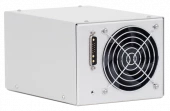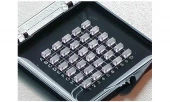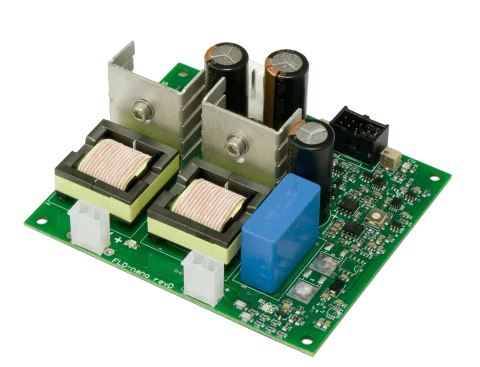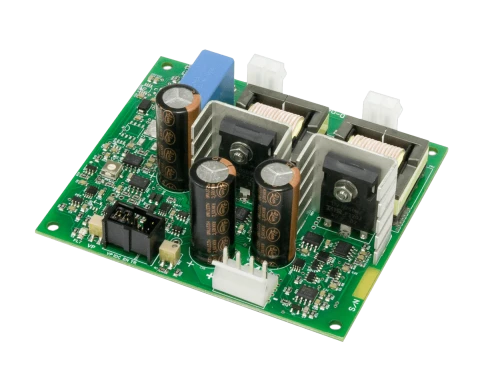Description
The FLD-nano flashlamp driver is an innovative solution designed to meet the needs of modern applications requiring precision and reliability. This compact yet powerful driver is tailored for air-cooled flashlamps, providing exceptional performance in various settings. Its design focuses on efficiency, ensuring that the external capacitor bank is charged to the desired voltage, and discharge is initiated accurately through an external TTL signal. The default trigger pulse is set at 400V, but customization is possible to suit specific requirements.
Operating the FLD-nano is straightforward, requiring a +24 V DC power supply and a pulse generator to establish the operating frequency. The output voltage level can be manually adjusted using an onboard configuration trimpot or remotely, by applying a DC voltage to the specified pin. This flexibility allows users to tailor the driver's performance to their specific needs, ensuring optimal operation in any environment. Additionally, the maximal output power can be reduced if necessary, providing further adaptability through an on-board trimpot.
The FLD-nano stands out for its robust construction and user-friendly interface, making it an ideal choice for professionals seeking reliable and efficient flashlamp drivers. With a focus on safety and efficiency, the driver incorporates features like door-interlock protection and a safety discharge resistor. Its compact size and lightweight design make it easy to integrate into existing systems, while passive cooling at low output power and optional forced air cooling at full power ensure consistent performance.
FLD-nano Flashlamp Driver: Compact, Powerful, 24V DC, 1000V Output
Specifications
| Input Voltage: | 24V DC |
|---|---|
| Max Input Current: | 10A |
| Average Output Power: | 100 W |
| Output Voltage: | Up to 1000 V |
| Output Power: | >100J/s |
| Trigger Capacitor: | 400V/470uF |
| Pulse Repetition Rate: | Up to 20Hz |
| Size (LxWxH): | 94x82x40mm |
| Weight: | Approx. 0.2 kg |
Features
- Compact and Powerful Design: The FLD-nano flashlamp driver is engineered to be compact without compromising on power, making it ideal for air-cooled flashlamps.
- Versatile Applications: Suitable for a variety of applications, including UV polymerization, UV sterilization, sintering, annealing, and stroboscopy.
- Programmable Output Voltage: Users can program the output voltage within the working range manually via an onboard trimpot or remotely using a DC voltage.
- High Output Power: Capable of delivering an average output power of 100 W, with up to 1000 V output voltage to the capacitor bank.
- External Triggering: Initiate the discharge with an external TTL signal, applying a default trigger pulse of 400V to the flashlamp.
- Flexible Power Supply: Requires a +24 V DC power supply and a pulse generator to set the operating frequency.
- Advanced Protections: Equipped with protections against overheating and includes a door-interlock protection and safety discharge resistor (200kOhm).
- Cooling Options: Passive cooling for small output power; forced air cooling with an external fan may be necessary at full output power.
- Environmental Tolerance: Operates efficiently within a temperature range of +10 to +40°C in non-condensing environments.
- Compact Dimensions: Measuring just 94x82x40mm and weighing approximately 0.2 kg, the FLD-nano is easy to integrate into various systems.
- Multiple Configurations Available:
- FLD-nano-900V: Maximum output voltage of 900V with Molex MiniFit connections.
- FLD-nano-900V-FL: Maximum output voltage of 900V with flying leads.
- FLD-nano-1000V: Maximum output voltage of 1000V with Molex MiniFit connections.
- FLD-nano-1000V-FL: Maximum output voltage of 1000V with flying leads.
Applications
- UV polymerization
- UV sterilization
- Sintering
- Annealing
- Stroboscopy
Frequently Asked Questions
What is the FLD-nano flashlamp driver?
What power supply does the FLD-nano require?
How can the output voltage of the FLD-nano be controlled?
What are the main applications of the FLD-nano?
What is the maximum output power of the FLD-nano?
What types of protection features are included in the FLD-nano?
What cooling methods are recommended for the FLD-nano?
Similar Products







Your inquiry has been received.
Create an account by adding a password
Why create an account?
- Auto-complete inquiry forms
- View and manage all your past messages
- Save products to your favorites
- Close your account anytime — no hassle

